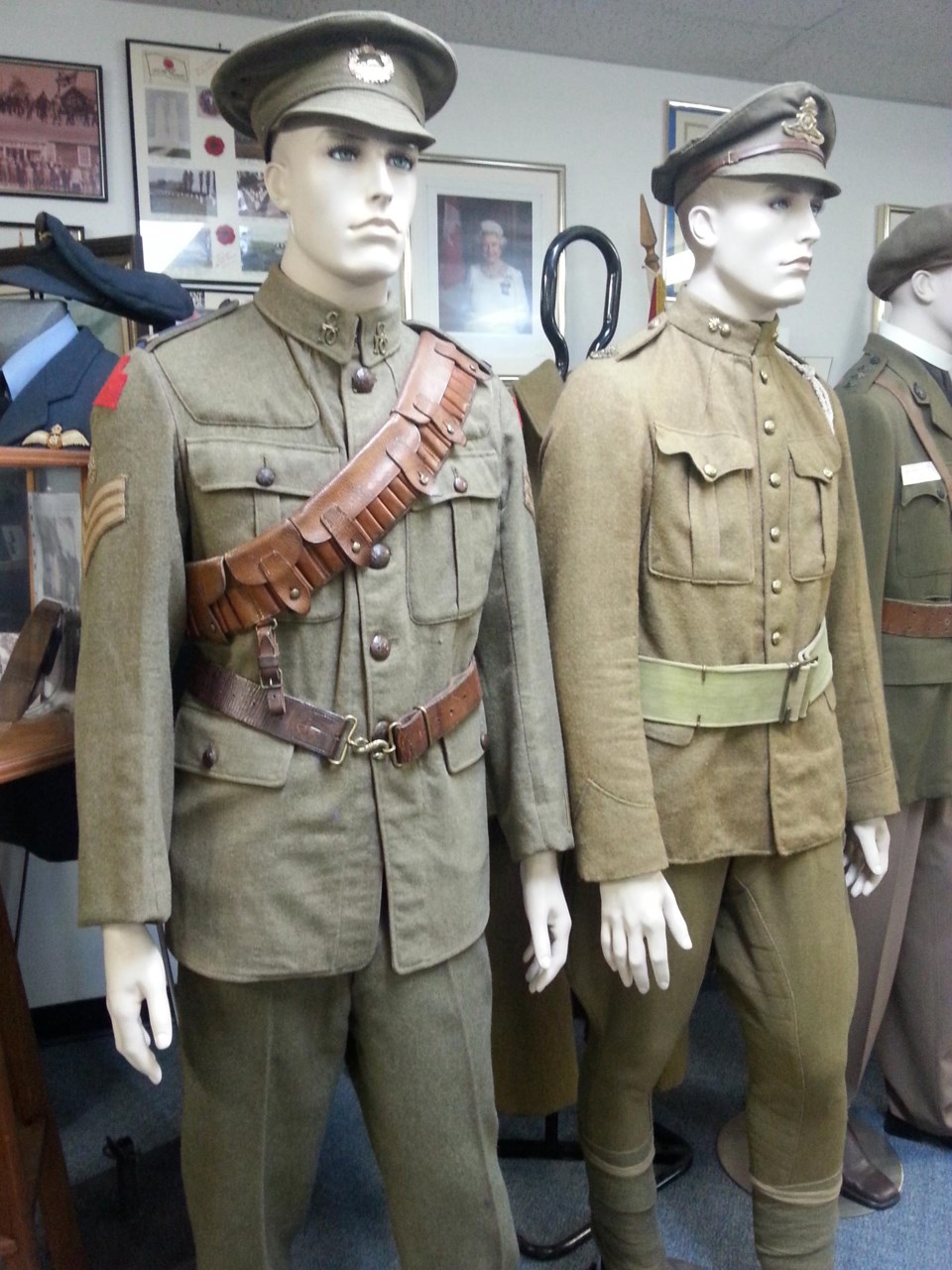By Melanie Jacob
Journal Editor
[email protected]
For the curious soul willing to trek down the steps of the Royal Canadian Legion Hall to its museum, there are quite a few wide-eyed mannequins standing ready to greet them. While all are clad in vintage military uniforms from differing decades and wars, only two are from the First World War, which is celebrating its centennial anniversary this year.
"In our collection, there are two WWI uniforms," said Al Hingley, president of the museum. "One represents the cavalry, who rode horses, and the other represents the Lewis gunmen, who used either air or water machine guns."
Though the uniforms lack the individuals who wore them, that doesn't mean they aren't still able to tell a story. For example, according to Hingley, one of the uniforms has a brass wound stripe, indicating that the soldier who wore that uniform had been injured at one point. The hat badges specified what outfit they belonged to, while the cloth insignias on their arms indicated what corps or battalion and what division they were part of.
"The outfits are a composition," said Hingley. "It's not accurate to the positions."
Fortunately, both uniforms are in very good condition, considering they're at least 100 years old. This could be because while some soldiers wore their uniforms regularly, others only donned them for ceremonies. The only thing that is certain about these uniforms is that they weren't in the trenches since those would be a much worse state due to the muddy environments trench soldiers had to subside in.
"Soldiers in the trenches often got trench foot mud was a constant concern," said Hingley.
Due to the complexity of organization within the Canadian military ranks and groups, the uniforms were subtly indicative of many different things. Small changes could denote changes over time as a result of changing conditions. The buttons on one uniform, for example, are darker than the other's brass ones so as to prevent the wearer from becoming a "sitting duck" for snipers, said Hingley.
As another example, the military boots from Canada were the only ones with straight laces.
"I don't know what the reason was, but it did distinguish a Canadian boot from say an American boot," said Hingley.
Now, those same uniforms continue to illustrate the life of at least two Canadian soldiers, forever remembered by the cloth legacy left behind.




